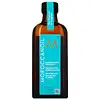What's inside
What's inside
 Benefits
Benefits

 Concerns
Concerns

 Ingredients Side-by-side
Ingredients Side-by-side

Water
Skin ConditioningBehentrimonium Chloride
PreservativeCetyl Alcohol
EmollientCetearyl Alcohol
EmollientGlycerin
HumectantPPG-3 Benzyl Ether Myristate
EmollientSteareth-20
CleansingArgania Spinosa Kernel Oil
EmollientCocodimonium Hydroxypropyl Silk Amino Acids
Skin ConditioningAmodimethicone
Polyquaternium-47
Skin ConditioningPolyquaternium-37
PPG-1 Trideceth-6
Skin ConditioningPropylene Glycol Dicaprylate/Dicaprate
EmollientGlycol Distearate
EmollientIsopropyl Alcohol
SolventCitric Acid
BufferingSodium Hydroxide
BufferingDisodium EDTA
Sodium Benzoate
MaskingParfum
MaskingCI 19140
Cosmetic ColorantCI 16035
Cosmetic ColorantWater, Behentrimonium Chloride, Cetyl Alcohol, Cetearyl Alcohol, Glycerin, PPG-3 Benzyl Ether Myristate, Steareth-20, Argania Spinosa Kernel Oil, Cocodimonium Hydroxypropyl Silk Amino Acids, Amodimethicone, Polyquaternium-47, Polyquaternium-37, PPG-1 Trideceth-6, Propylene Glycol Dicaprylate/Dicaprate, Glycol Distearate, Isopropyl Alcohol, Citric Acid, Sodium Hydroxide, Disodium EDTA, Sodium Benzoate, Parfum, CI 19140, CI 16035
 Reviews
Reviews

Ingredients Explained
These ingredients are found in both products.
Ingredients higher up in an ingredient list are typically present in a larger amount.
You may know this ingredient as argan oil. Argan Oil has antioxidant, hydrating, and soothing properties.
Studies have shown argan oil can help fight again radical damage from the sun. This makes it effective at preventing hyperpigmentation.
Large amounts of vitamin E found in argan oil helps the skin retain water. Argan oil also contains fatty acids such as linoleic acid, oleic acid, and palmitic acid. It is also a good source of lipids.
Another benefit of argan oil is skin-soothing. It can help reduce inflammation-related skin symptoms.
Argan Oil is effective at regulating sebum production in pores. This can make it effective at treating hormonal acne.
Traditionally, argan oil was used for its antibacterial and antifungal properties. However, argan oil contains fatty acids that may make it not fungal-acne safe.
Argan Trees are native to Morocco.
Learn more about Argania Spinosa Kernel OilParfum is a catch-all term for an ingredient or more that is used to give a scent to products.
Also called "fragrance", this ingredient can be a blend of hundreds of chemicals or plant oils. This means every product with "fragrance" or "parfum" in the ingredients list is a different mixture.
For instance, Habanolide is a proprietary trade name for a specific aroma chemical. When used as a fragrance ingredient in cosmetics, most aroma chemicals fall under the broad labeling category of “FRAGRANCE” or “PARFUM” according to EU and US regulations.
The term 'parfum' or 'fragrance' is not regulated in many countries. In many cases, it is up to the brand to define this term.
For instance, many brands choose to label themselves as "fragrance-free" because they are not using synthetic fragrances. However, their products may still contain ingredients such as essential oils that are considered a fragrance by INCI standards.
One example is Calendula flower extract. Calendula is an essential oil that still imparts a scent or 'fragrance'.
Depending on the blend, the ingredients in the mixture can cause allergies and sensitivities on the skin. Some ingredients that are known EU allergens include linalool and citronellol.
Parfum can also be used to mask or cover an unpleasant scent.
The bottom line is: not all fragrances/parfum/ingredients are created equally. If you are worried about fragrances, we recommend taking a closer look at an ingredient. And of course, we always recommend speaking with a professional.
Learn more about Parfum